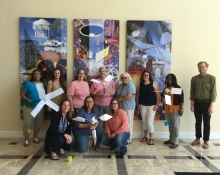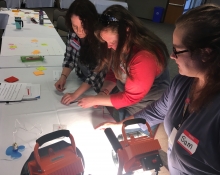Snohomish PUD Microgrid Education
This workshop, funded through BPA in partnership with Snohomish PUD, was an effort to reach teachers in the vicinity of the new Arlington Microgrid Project, completed by the utility in 2019. This microgrid is intended to serve as an educational tool for the surrounding area, having an educational center scheduled to be completed in 2020 to allow for site visits by the general public. This two-day engagement took place on July 25 and 26, 2019, reaching 20 teachers from 14 different schools.
On day one, teachers focused primarily on acquiring content background, engaging in a series... Read full project narrative >>



